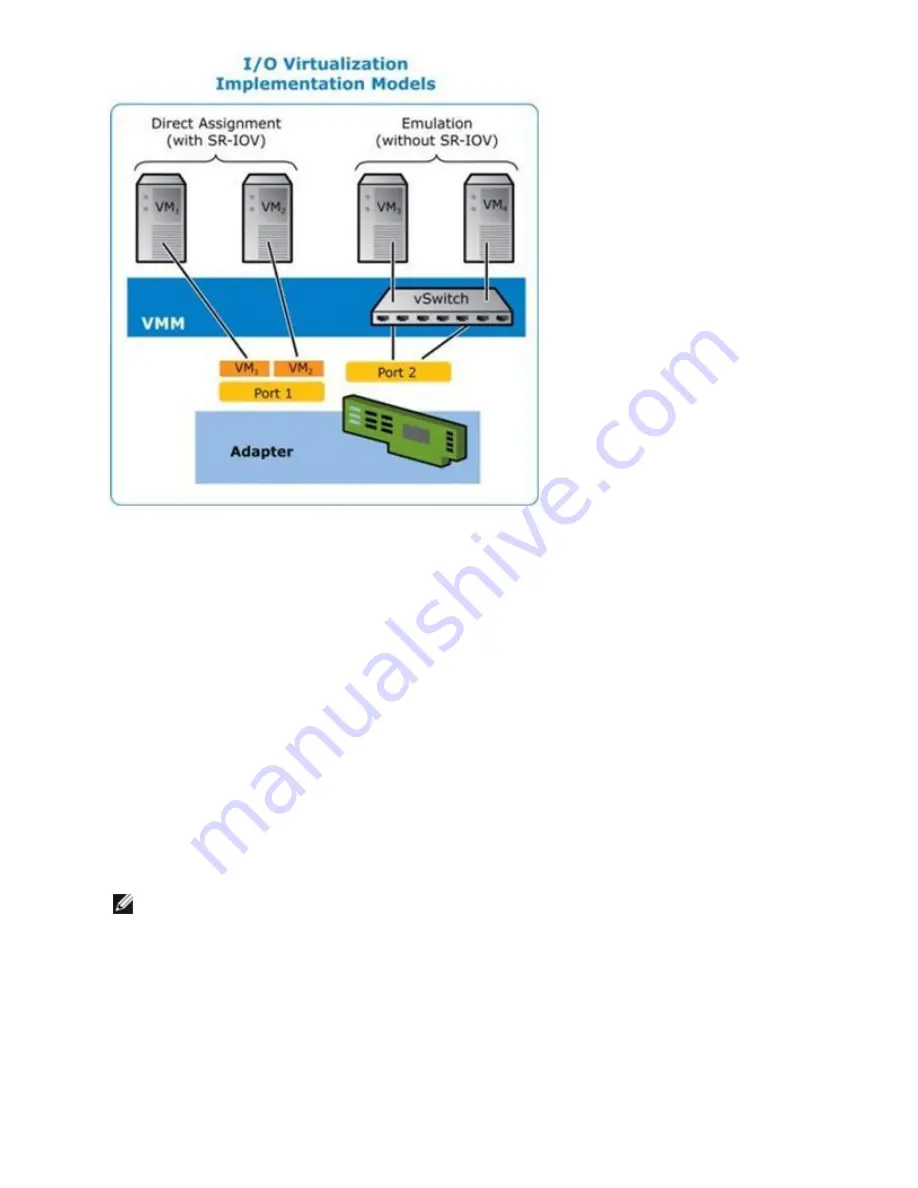
SR-IOV architecture includes two functions:
l
Physical Function (PF) is a full featured PCI Express function that can be discovered, managed and configured
like any other PCI Express device.
l
Virtual Function (VF) is similar to PF but cannot be configured and only has the ability to transfer data in and out.
The VF is assigned to a Virtual Machine.
SR-IOV Benefits
SR-IOV has the ability to increase the number of virtual machines supported per physical host, improving I/O device
sharing among virtual machines for higher overall performance:
l
Provides near native performance due to direct connectivity to each VM through a virtual function
l
Preserves VM migration
l
Increases VM scalability on a virtualized server
l
Provides data protection
SR-IOV Software Requirements
l
ixgbe driver - Intel® Linux Base Driver for 82599 and X540-based 10 Gigabit Family of Adapters
l
ixgbevf driver - Intel® Linux Driver for 82599 and X540-based 10 Gigabit Family of Adapters
l
kvm driver
NOTE:
SR-IOV must be enabled in the BIOS.
ixgbevf Driver
SR-IOV is supported by the ixgbevf driver, which should be loaded on both the host and VMs. This driver supports
upstream kernel versions 2.6.30 (or higher) x86_64.
The ixgbevf driver supports 82599-based and X540-based virtual function devices that can only be activated on ker-
nels supporting SR-IOV. SR-IOV requires the correct platform and OS support.
















































